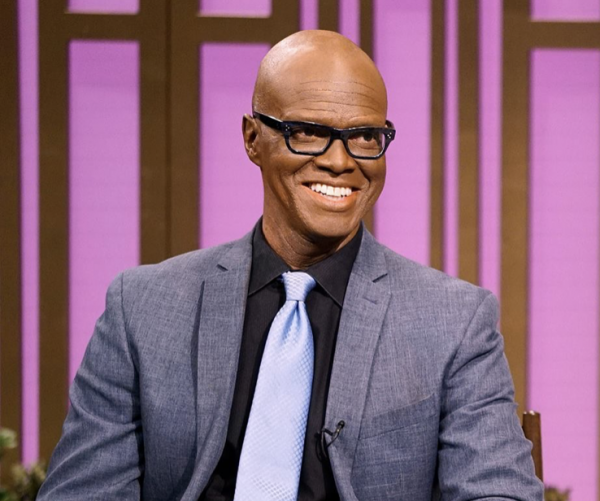
 When Lee Thomas was diagnosed with vitiligo, he was a 25-year-old TV reporter and a rising star in Detroit. It all happened during some very formative years. While being diagnosed with vitiligo is stressful under any circumstances, you can only imagine how it felt for a person in the public eye back in 1992. Back then vitiligo was a well-kept secret.
When Lee Thomas was diagnosed with vitiligo, he was a 25-year-old TV reporter and a rising star in Detroit. It all happened during some very formative years. While being diagnosed with vitiligo is stressful under any circumstances, you can only imagine how it felt for a person in the public eye back in 1992. Back then vitiligo was a well-kept secret.
In the early 1990s, the cause of vitiligo was still unknown. Scientists had not agreed on the principles that made people suddenly start losing their pigmentation. The notion that vitiligo was an autoimmune disease was being formulated but was nowhere near to being recognized. The patient community was scattered. Dermatologists and scientists had little contact with one another. As there was no accepted theory for the cause, nobody was able to formulate an approach for a cure. As a result, patients were by and large suffering in solitude.
Lee Thomas’ first reaction to having vitiligo was that of shock and anger. As a news anchor, he said he felt he was going to lose everything. After the first shock was over, he started to turn grief into action. He embraced his identity as a reporter and went out on a long-lasting research spree. He wanted to know everything about vitiligo! As his understanding matured, he started to fight for his life on every level. He fought to maintain his positive, happy-go-lucky personality. He became determined not to become a recluse. Ultimately he decided that if they wanted to knock him off TV, they would have to fire him!
His fight soon moved from a personal sphere to a fight for the entire vitiligo community. It started with him establishing the vitiligo support group V Strong in South East Michigan. He reached out to Dr. Henry Lim at Henry Ford’s Health System, who welcomed his energy and enthusiasm. Dr. Lim helped Lee’s support group obtain space within the walls of the Henry Ford Health System. Lim further made sure that every V Strong support group meeting was attended by an MD. As a result, vitiligo patients in the Detroit area started to get a more nuanced view of the disease. They were soon able to distinguish between science-based and what Lee Thomas calls “snake oil”-based treatments. The support groups provided comfort by allowing vitiligo patients to share their history and journey with one another. An inclusive patient community was in the making, and it was growing fast!
Today Lee Thomas sees V Strong as a vibrant community providing the opportunity to share in one’s loss, sorrow, hope, and pride. Nationwide, many gaps are closing. Doctors, scientists, patients, and pharmacologists are talking as the vitiligo community is redefining itself. The discussion within the community has led to a number of approaches to vitiligo. Some patients are calling vitiligo a disease and are vividly supporting the development of novel treatments, whereas others describe the pigment loss as a disorder, hoping that their skin condition is seen as a part of natural diversity.
Lee Thomas has an understanding of both perspectives and emphasizes that people decide for themselves how they adjust to vitiligo. From Lee’s personal perspective, it is, however, important to call a spade a spade. “We need to call vitiligo a disease. If it is not a disease, we will not get resources, and if we don’t get resources, we will not get a cure. It’s that simple!” Getting to a point where the future looks bright has, however, been a long and deliberate battle, fought on a number of fronts. Lee does not want the gains of this struggle to evaporate into thin air.
As an African American, Lee Thomas also looks at vitiligo through the lens of his community. Vitiligo is hard to carry for anyone. For a darkly pigmented person, the contrast caused by the disease becomes hard to hide. For a member of the African-American community, vitiligo may further feel like an attack on a person’s community affiliation. For black males, vitiligo may even feel like an attack on one’s masculinity. “Vitiligo forces you to think through your identity as an African American beyond skin color,” says Lee Thomas. While this may seem obvious, it may require a lot of soul searching. The adaptation is, further, a two-way street. It provides an opportunity for growth, both for the individual as well as for the community. “In this respect, we have over the past 20 years come a long way,” says Lee Thomas.
On a highly personal note, Lee Thomas sees people’s reactions to vitiligo as something that takes time getting used to. “In the beginning, everybody was staring at me.” Lee says that he had to make a specific choice to allow people to stare. Initially, he thought that people were staring because they judged him in a negative way. After a while, he understood that there was not necessarily malicious intent. People just did what he did himself when he got the disease. “You stared at all the different color of the lesions, trying to understand what is going on in your skin.” You can’t fault people for staring. Coming to that realization has helped Lee find harmony in his social interactions.
When you casually mention vitiligo in a discussion, many people bring up a friend or a relative who has the disease. From here the discussion often shifts to celebrities with the disease. The first name to come up tends to be Michael Jackson, followed by both Lee Thomas and the photo model Winnie Harlow. For Lee Thomas going public with vitiligo was to some extent a reaction to the mysticism portrayed by Michael Jackson’s approach. As Michael Jackson did not want to speak about vitiligo in public, Lee Thomas felt he wanted to fill the vacuum. In 2007 he published the bestseller Turning White: A Memoir of Change where he opened up a dialog both within the vitiligo community itself, as well as with the general public. Turning White made Lee Thomas a role model patients could identify with. The vitiligo movement was gaining momentum!
Today the vitiligo community stays in touch with each other both through actual meetings as well as through online forums. Facebook groups with more than 20,000 members provide forums where patients can share information with one another. Shared experiences, videos, and pictures are reducing the collective stress and stigma. 20 years ago, it would have been difficult to imagine photo models with an uneven skin tone. Today Winnie Harlow is a person who’s easy to admire and identify with. People are proud to put out their photos without makeup or camouflage.
Openness has made the vitiligo community both visible and accessible. A self-aware community that demands a cure is seen as a community that deserves one. This was definitely visible at the World Vitiligo Day Conference in Houston in June 2019, an event that attracted patients, scientists, clinicians, and startup companies engaged in getting new therapies to clinical trials.
When looking at the future, Lee Thomas sees several effective treatments coming together. In a decade or so, we may be in a situation where vitiligo is a disease that, once diagnosed, responds to a standard set of treatments. Lee Thomas’ work does, in a tangible way, bring this day closer.
When Lee Thomas gets the question of what he would say to a young person getting vitiligo today, he becomes serious and makes a short pause. He is gathering his thoughts. This question is clearly important. He has made the transformation himself, and he wants to make sure that there is a helping hand for people walking down the same road. “I would say: How are you doing? I understand what you are going through. You are not alone. You will not only live through vitiligo, but you will also thrive in it. It will be a part of who you are, but it will not be everything you are. Don’t isolate yourself, go on living your life, don’t make it something that changes your personality.” The oxymoron is, however, that while you work on not losing yourself, you tend to come out wiser and stronger at the other end. Anecdotes of how Lee Thomas’ work has helped vitiligo patients over transformative barriers is the reward that keeps him going.
Are you a Vitiligo Patient Leader? Join now to become a member. register now
Posted by Myrtis Sahara




